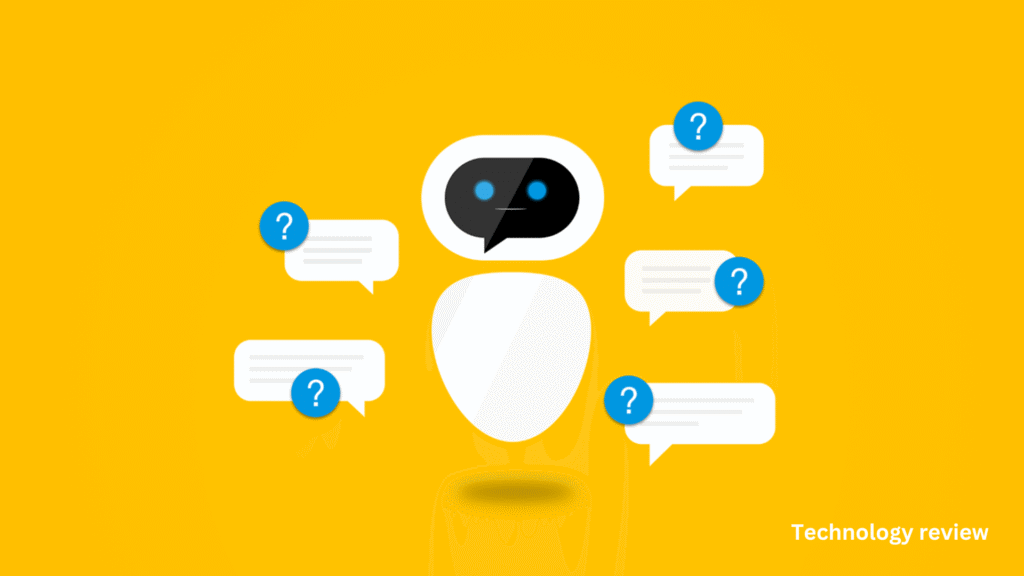Distinguishing Al-generated text with watermarks for chatbots As artificial intelligence chatbots become increasingly sophisticated, distinguishing Al-generated text from human- written content poses a growing challenge. You may have encountered Al-produced text without even realizing it. To address this issue, researchers are exploring ways to watermark Al-generated content, providing a digital fingerprint that allows you to identify its origins.
This article examines the emerging field of Al text watermarking for chatbots, explaining how these invisible markers work and why they matter. You’ll learn about the potential applications, limitations, and implications of this technology as it develops. Understanding AI watermarking empowers you to navigate an evolving digital landscape where human and machine-generated text increasingly intermingle.
The Rise of Al-Generated Text
In recent years, we’ve witnessed an unprecedented surge in Al- generated text across various digital platforms. This phenomenon has revolutionized content creation, customer service, and even creative writing. The rapid advancement of natural language processing (NLP) technologies has enabled Al to produce increasingly sophisticated and human-like text, blurring the lines between machine-generated and human- authored content.
Proliferation of Chatbots
One of the most visible manifestations of this trend is the widespread adoption of chatbots. These Al-powered conversational agents have become ubiquitous in customer service, e-commerce, and social media platforms. As chatbots become more advanced, the need for effective methods of distinguishing Al-generated text from human-written content has grown increasingly urgent.
Challenges in Content Authentication
The rise of Al-generated text has presented significant challenges in content authentication and verification. With the increasing quality of machine-generated content, it has become increasingly difficult to discern whether a piece of text was written by a human or an Al. This has led to growing concerns about the potential for misinformation, fraud, and the erosion of trust in online communications.
The Role of Watermarking
To address these challenges, researchers and developers have turned to watermarking techniques as a potential solution. Watermarking Al-generated text offers a promising approach to distinguishing machine-generated content from human- authored text, providing a crucial tool for maintaining transparency and accountability in the digital age.
The Need to Identify Al-Generated Content
As artificial intelligence continues to advance, the ability to distinguish between human-written and Al-generated text has become increasingly important. With the rise of sophisticated language models and chatbots, it’s becoming more challenging to discern the source of written content. This growing concern has led to the development of watermarking techniques for Al- generated text.
Preserving Authenticity and Trust
In an era where misinformation can spread rapidly, identifying the origin of content is crucial. Watermarking Al-generated text helps maintain transparency and accountability in digital communications. By clearly marking Al-produced content, we can preserve the authenticity of human-authored work and build trust with readers.
Ethical and Legal Considerations
The ability to distinguish between human and Al-written content also has significant ethical and legal implications. From academic integrity to journalistic standards, knowing the source of text is essential. Watermarking provides a reliable method to attribute authorship and protect intellectual property rights in an increasingly Al-driven world.
Enhancing Al Development
Ironically, the process of watermarking Al-generated text can also contribute to the improvement of Al systems. By studying how these watermarks are applied and detected, researchers can gain valuable insights into the inner workings of language models, potentially leading to more advanced and responsible Al development.
Introducing Watermarking for Al Text
In the rapidly evolving landscape of artificial intelligence, the ability to distinguish between human-written and Al-generated text has become increasingly crucial. Enter watermarking, a promising solution that’s gaining traction in the world of chatbots and Al-generated content.
What is Al Text Watermarking?
Watermarking for Al-generated text is a subtle yet powerful technique that embeds imperceptible markers within the text produced by Al systems. These digital signatures act as a form of identification, allowing users to verify the origin of the content. Much like traditional watermarks in images, these textual watermarks are designed to be unobtrusive to human readers while remaining detectable through specialized analysis.
The Importance of Watermarking
As Al language models become more sophisticated, the line between human and machine-generated text continues to blur. Watermarking serves several critical purposes:
- Transparency: It provides clarity on the source of information, enabling readers to make informed decisions about the content they consume.
- Accountability: Watermarking helps attribute Al-generated text to its source, fostering responsibility in content creation.
- Trust: By clearly identifying Al-authored content, watermarking builds trust between users and Al systems.
Implementing watermarking techniques in chatbots and other Al text generators is a significant step towards responsible Al development, ensuring that as technology advances, we maintain the ability to discern and validate the origins of digital content. Distinguishing Al-generated text with watermarks for chatbots.
How Watermarking Al Text Works
Watermarking Al-generated text is an innovative technique designed to distinguish machine-created content from human- written text. This process involves embedding subtle, imperceptible markers within the generated text, allowing for easier identification and verification of its origin.
The Watermarking Process
The process of watermarking Al-generated text typically involves modifying the text generation algorithm to incorporate specific patterns or statistical properties. These modifications are carefully crafted to be unnoticeable to human readers while remaining detectable through specialized analysis tools.
Some common watermarking techniques include:
- Altering word choice probabilities
- Inserting specific character sequences
- Manipulating sentence structures
Detection and Verification
To identify watermarked Al text, specialized software analyzes the content for the presence of these embedded markers. This analysis can reveal whether the text was generated by an Al system and, in some cases, even identify which specific Al model created it.
Implications for Chatbots
For chatbots and other Al-powered conversational systems, watermarking offers a way to increase transparency and accountability. By implementing this technology, companies can more easily distinguish between human-written and Al- generated responses, helping to maintain trust with users and comply with potential future regulations regarding Al-generated content.
Implementing Watermarking to Distinguish Al Chatbots
Understanding the Need for Watermarking
In today’s digital landscape, the ability to differentiate between human-generated and Al-generated text has become increasingly crucial. Watermarking offers a solution to this challenge, particularly for Al chatbots. By implementing watermarking techniques, you can create a subtle yet detectable signature within the text produced by Al systems. Distinguishing Al-generated text with watermarks for chatbots.
Techniques for Al-generated Text Watermarking
There are several approaches to watermarking Al-generated text. One method involves manipulating the statistical properties of word choices and sentence structures. Another technique embeds imperceptible patterns into the text that can be detected with specialized algorithms. These watermarks are designed to be robust against paraphrasing and editing, ensuring their persistence even if the text is modified.
Benefits and Challenges
Watermarking provides a means to authenticate the source of text, helping to maintain transparency and trust in Al-human interactions. It can also aid in tracking the spread of Al- generated content across platforms. However, implementing effective watermarking systems presents challenges, including balancing invisibility to human readers with detectability by automated systems. Additionally, watermarking must be implemented in a way that doesn’t compromise the quality or coherence of the Al-generated text.
Conclusion
As Al-generated text becomes increasingly prevalent, watermarking offers a promising solution for distinguishing chatbot outputs. By implementing subtle linguistic patterns or digital signatures, you can enhance transparency and accountability in Al systems. While challenges remain, such as potential workarounds and false positives, watermarking techniques continue to evolve. As an informed user oг developer, staying abreast of these advancements will be crucial. By embracing watermarking alongside other verification methods, you can help foster trust in Al technologies while mitigating risks of misuse. Ultimately, responsible development and deployment of Al chatbots will require ongoing collaboration between technologists, policymakers, and end- users to ensure ethical and effective implementation of watermarking solutions.



